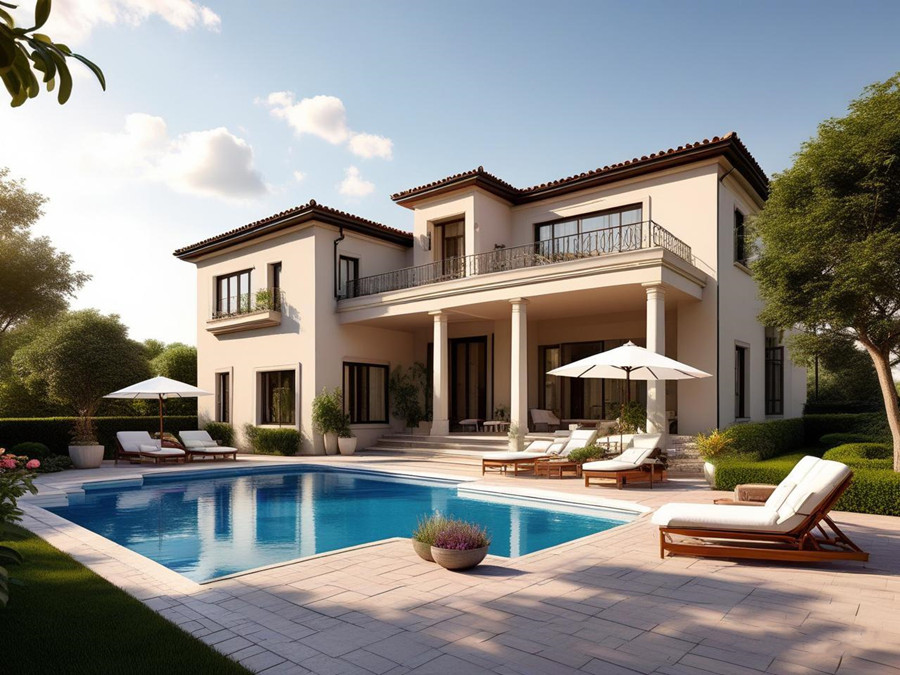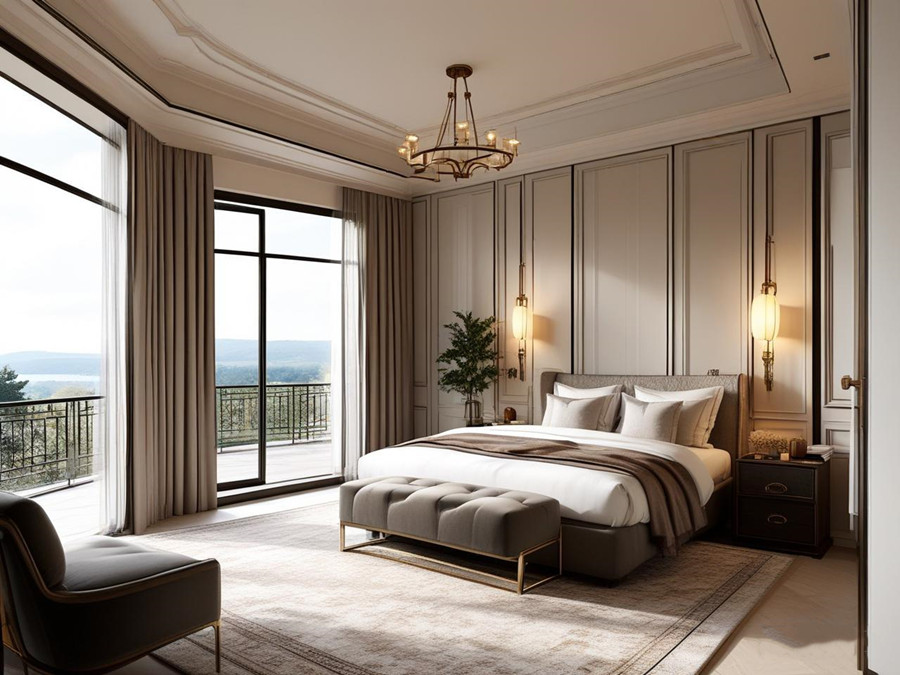Introduction: The Rise of Light Steel Villas and Questions About Traditional Materials
With the popularization of green building concepts and the maturation of prefabricated technology, light steel villas have gradually become a popular choice in the self-built housing market. However, many consumers still wonder: Does this new type of construction require traditional cement bricks? This article will delve into the structural characteristics and material requirements of light steel villas, compare them with traditional brick-concrete structures, and provide readers with scientifically grounded decision-making insights.

I. Structural Analysis of Light Steel Villas: Are Cement Bricks Necessary?
Light steel villas use cold-formed thin-walled steel as the main framework, constructed through factory-prefabricated components and on-site assembly. Their core advantages lie in "lightweight design" and "modularity," but this does not mean they completely exclude traditional materials.
1. No Cement Bricks Needed for the Main Structure
The load-bearing system of light steel villas consists of high-strength steel, with wall fillers typically being glass wool, rock wool, or Oriented Strand Board (OSB). Cement bricks are not essential here, as their role can be replaced by lightweight insulation materials.
2. Partial Use of Cement Bricks in Specific Scenarios
- Foundation: The foundation of light steel villas still requires concrete pouring, and some cases may incorporate cement bricks to enhance stability.
- Functional Additions: Cement bricks might be used locally for traditional fireplaces, heavy decorative walls, or other custom requirements.
Conclusion: The main construction of light steel villas does not rely on cement bricks, but limited applications may exist in hybrid designs or specialized scenarios.

II. Four Key Differences Between Light Steel Villas and Traditional Brick-Concrete Structures
| Comparison Criteria | Light Steel Villas | Brick-Concrete Structures |
| Primary Materials | Cold-formed steel, insulation, OSB | Red bricks, cement, rebar, gravel |
| Construction Period | 30–60 days (including prefabrication) | 6–12 months (weather-dependent) |
| Eco-Friendliness | 90% recyclable, minimal waste | High energy consumption, pollution |
| Seismic Resistance | Withstands 9-magnitude earthquakes | Typically resists 6–7-magnitude quakes |
III. Five Core Advantages of Light Steel Villas
1. Eco-Friendly and Energy-Efficient
- Recyclable steel reduces resource waste.
- Multi-layered wall designs (e.g., insulation + vapor barriers + breathable membranes) achieve 50–70% higher energy efficiency than traditional buildings.
2. Rapid Construction with Industrial Precision
- Factory prefabrication ensures millimeter-level accuracy; on-site assembly resembles "building with blocks."
- A 200㎡ villa’s main structure takes 10–15 days, versus 3+ months for brick-concrete builds.
3. 10–15% Higher Space Utilization
- Light steel walls (15–20 cm thick) are thinner than brick walls (24–37 cm).
- Increased interior space suits small plots ideally.
4. Superior Seismic and Wind Resistance
- Flexible structures absorb seismic energy, meeting China’s 9-degree seismic standards.
- Bolt-connected joints withstand Category 12 typhoons.
5. Lower Lifetime Costs
- Initial costs (~¥1,500–2,500/㎡) are offset by minimal maintenance.
- No frequent crack repairs; lifespan exceeds 70 years.

IV. Challenges and Solutions for Light Steel Villas
1. Market Misconceptions
- Myths: "Light steel = fragile," "suitable only for temporary housing."
- Solutions: Case studies—e.g., 98% of post-earthquake resettlement houses in Ludian, Yunnan, used light steel—prove durability.
2. Acoustic and Moisture Management
Issues: Noise transmission in cavities; metal condensation.
Solutions:
- Gradient insulation (e.g., rock wool + polyurethane).
- Smart ventilation systems for humidity control.
3. Regional Supply Chain Gaps
- Current Status: Limited skilled teams in smaller cities.
- Recommendation: Partner with national brands (e.g., Beixin Housing, Broad Group) for standardized services.
V. Future Trends: Hybrid Innovations Combining Light Steel and Cement
Technological advancements are driving hybrid construction models:
- Light Steel + Cement Fiber Boards: Balances lightweight design with fire resistance (Class A non-combustible).
- 3D-Printed Concrete + Steel Frames: Enhances design flexibility for complex nodes.
- Recycled Brick Integration: Repurposes construction waste into cement bricks for non-load-bearing elements like landscape walls.
Conclusion: Cement Bricks in Light Steel Villas? Balancing Needs and Innovation
Light steel villas do not seek to eradicate traditional materials but offer a more efficient, sustainable building approach. Whether cement bricks are needed depends on functional requirements and design philosophy. For those prioritizing speed and low-carbon living, pure light steel systems suffice. For hybrid aesthetics, scientifically blending traditional materials adds unique value. As material science and smart construction evolve, light steel villas will continue redefining residential architecture with versatility and innovation.